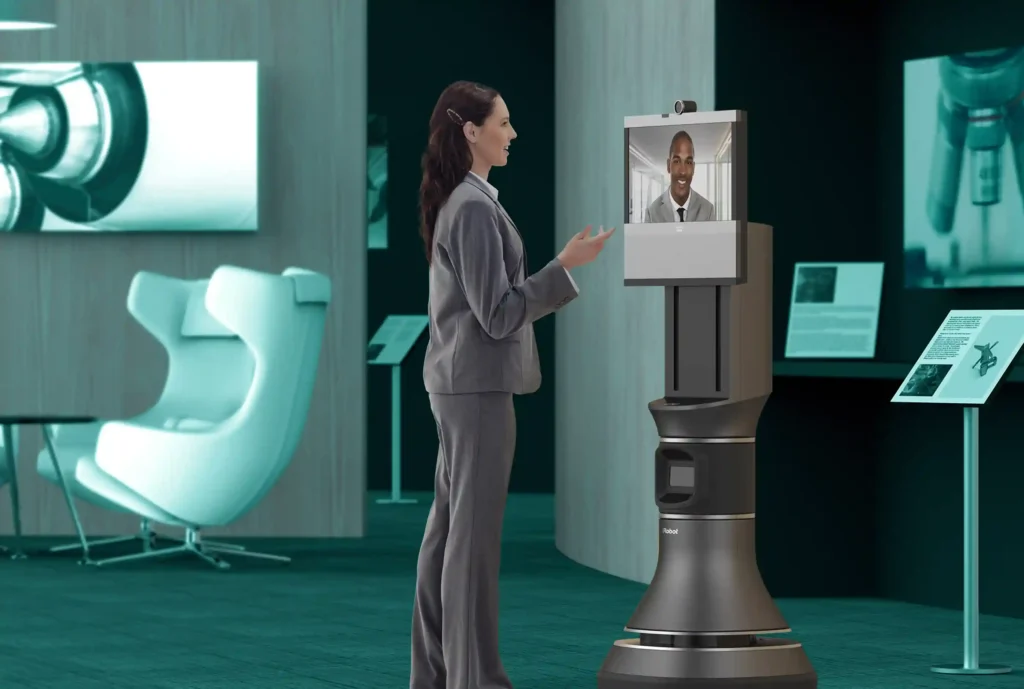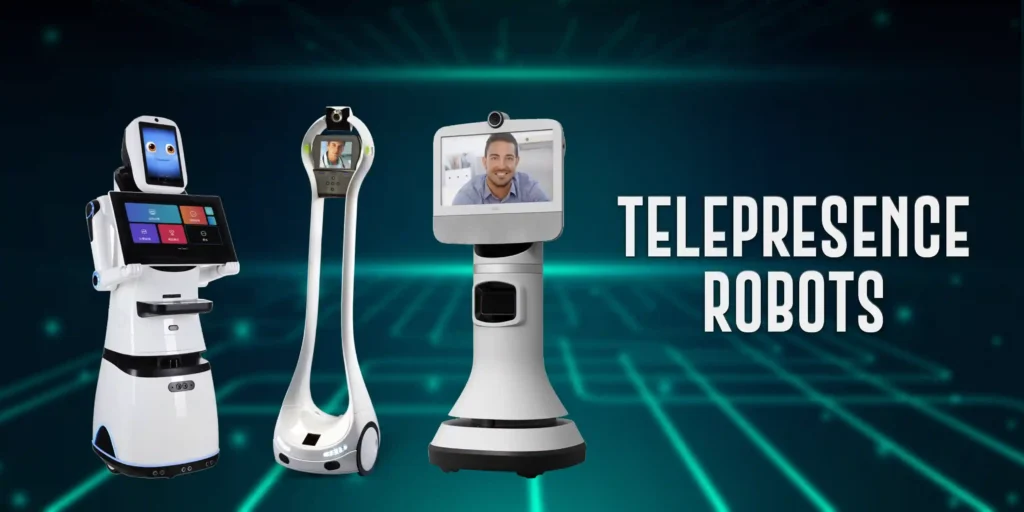Telepresence robots are robotic systems that have cameras, microphones, speakers, and at times screens installed. They are commonly referred to as remote communication robots or teleoperated robots. Using a computer or a mobile device, users can operate these robots remotely. You can move the robot about a place and engage with people as if they were in person by just logging into a digital interface.
Introduction
Robots that can telepresence are transforming remote interaction. With the help of these innovative gadgets, people can be present anywhere without being there. You can be asking how they operate.
Traditional video calls or conference tools frequently miss the sense of immersion and presence that these robotic telepresence devices provide. They give users more flexibility and mobility, making it easier for them to move around and carry out real-time communication.

Telepresence robots are breaking down barriers to distance and improving remote interaction experiences like never before, whether they are used for business meetings, medical consultations, educational purposes, or just keeping in touch with relatives who are far away.
The Impact of Telepresence Robots on Various Industries
By providing a remote presence solution that helps people to communicate and engage in real-time from anywhere in the world, telepresence robots are changing sectors. For a perfect user experience, these robots are loaded with modern technology including cameras, microphones, and sensors.
Telepresence robots have become popular in the healthcare sector, where they help physicians do remote procedures, have virtual consultations with patients, and train other professionals in absent parts of the world. Access to healthcare services has greatly enhanced because of this technology, particularly in rural or rural areas.
Telepresence robots are used in the educational field to support remote learning by helping students take part in live classes from a distance. This has been especially helpful in emergencies where typical school environments have been affected, like as the COVID-19 epidemic.
Because teleoperated robots help operators control robotic arms or vehicles from a distance, they are also essential in industries like manufacturing and logistics. This improves production levels, lowers dangers for those working in dangerous areas, and improves efficiency.
Robotic telepresence has uses not only in these industries but also in retail, customer service, and entertainment. Businesses are using this technology to improve relationships with customers, provide individualized services, and give customers engaging experiences.
Telepresence robots are flexible tools with multiple benefits in a variety of sectors. We could see more breakthroughs and developments in technology going forward, which will impact how distant collaboration and communication are shaped in the future.
Improve Remote Collaboration
The way disconnected teams collaborate in the workplace is being transformed by telepresence robots. With the help of these innovative robots, workers who work remotely can engage in meetings and debates just like they would if they were in the room.
Team members can engage in virtual meetings in a more active and immersive way with the help of telework robots. Team members who are dispersed across different parts can interact, communicate, and engage more effectively because of the robotic presence.
These robot-assisted telecommuting options improve disconnected workers’ productivity while also promoting a feeling of openness and team spirit. These robots have virtual collaboration technologies built in that allow real-time interactions and smooth communication between on-site and detached team members.
The use of telepresence robots in the workplace will greatly improve separate cooperation efforts for businesses. Businesses can use this technology to create a stronger work environment where all employees, no matter where they are physically located, feel appreciated and actively participate.
The Future
The way we engage and communicate remotely has been completely transformed by telepresence robots. Robotic communication technology is developing, helping these machines to become more intelligent and flexible than in the past.
Developing modern teleoperation systems is one of the most important areas to keep an eye on. These technologies provide smooth engagement in a variety of contexts, including business meetings, healthcare, education, and more, by helping humans to accurately and easily control robots from a distance.
Future developments in robot-assisted communication are also shaping telepresence robots. These advancements are improving the user experience overall and increasing the opportunities for remote communication. They include better speech recognition and natural language processing capabilities to increase accessibility and flexibility.
We can imagine that telepresence robots will become more important in helping people connect across the globe as technology advances. Keep an eye out for amazing developments in this field that will completely transform communication in the digital age.
FAQS
Users can engage in real-time interaction with a remote environment using telepresence robots, which are remotely controlled devices equipped with cameras, microphones, and screens. They create a virtual presence practical, boosting cooperation, communication, and exploration across a range of industries, including business, education, and healthcare.
Telepresence robots provide businesses with a variety of advantages, such as better work-life balance for employees, lower travel expenses, more accessibility for remote workers, and the ability to join events or inspections virtually while physically present.
Telepresence robots involve many important features, such as extended battery life, obstacle-avoiding sensors, mobility for navigation, audio and video communication capabilities, screen displays for visual representation, remote control interfaces, and integration with other hardware and software.
Conclusion
Integrating telepresence robots provides many possibilities for improving remote interactions and reducing geographic barriers as we move forward to a more digital and connected community. People and organizations can open new possibilities for remote cooperation and communication by carefully using this technology.
